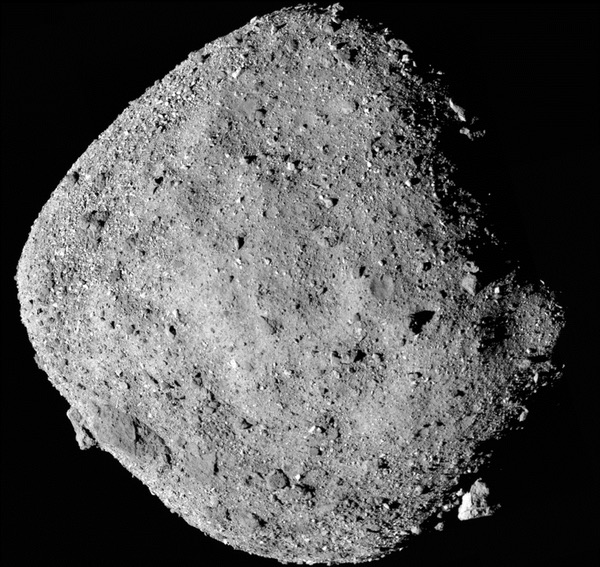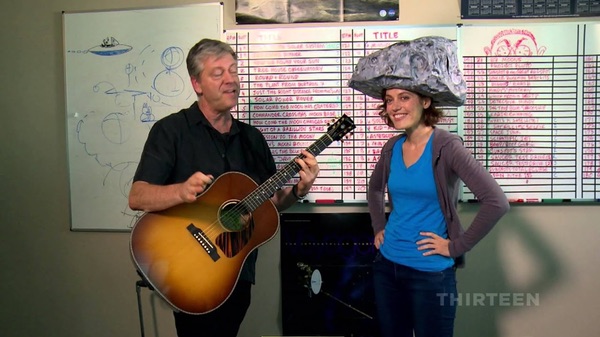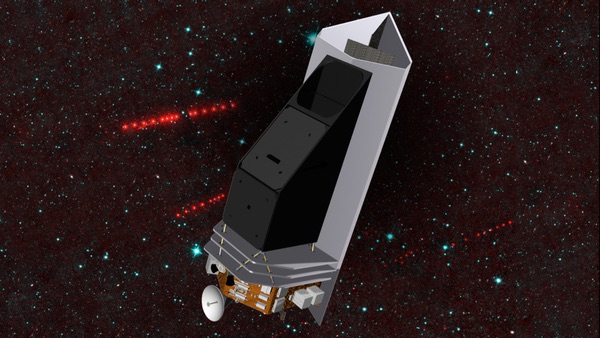One scientist’s 15-year (and counting) quest to save Earth from asteroid impactsby Alfred McEwen, Erik Asphaug, and Vishnu Reddy
|
| In 2005, Congress directed NASA to detect, track, and characterize 90 percent of NEOs 140 meters diameter or larger within 15 years. Those 15 years are up next year, but only about 30 percent have been found. |
NEOCam is a 50-centimeter telescope that will discover and characterize a large fraction of the asteroids and comets in the inner part of the solar system. It was supported based on its fundamental science, but the data that it will produce also serves planetary defense, which can be considered applied science. NASA administrator Jim Bridenstine has been called “passionate” about planetary defense and the American public agrees: in a recent AP-NORC poll of US priorities in space, monitoring asteroids was considered top priority by 68 percent of those polled, higher than any other category (59 percent prioritized scientific research and exploration; 23 percent and 27 percent prioritized human exploration of the Moon and Mars, respectively; and 19 percent prioritized a US military presence in space.) Imagine how much any presidential candidate would like to poll at 68 percent!
In 2005, Congress directed NASA to detect, track, and characterize 90 percent of NEOs 140 meters diameter or larger within 15 years. Those 15 years are up next year, but only about 30 percent have been found because most are so difficult to detect from ground-based telescopes. NASA asked the National Academies to assess how best to achieve the goal, and they strongly endorsed the space-based infrared method advocated for the past 15 years by Amy Mainzer and her team. Because most NEOs are very dark (like Bennu, explored by OSIRIS-REx) they are very hard to spot in visible light; it’s like looking for a lump of charcoal in a dark room. Primitive asteroids absorb 90–95 percent of incident sunlight, so like black pavement they get hot, which makes them glow in the infrared. Even lighter asteroids glow at infrared wavelengths, just about as brightly as the dark objects.
That’s what makes an infrared telescope a great way to discover NEOs. Furthermore, an infrared detection gives you a good estimate the asteroid’s diameter, even though the asteroid is not resolved (each is much smaller than a pixel.) Observing with an infrared camera is the answer, and that’s best done from space, where a telescope is outside the sometimes cloudy atmosphere and away from Earth’s heat, and can observe nearly 24/7 from an optimal geometry (NEOCam will co-orbit the Sun at “L1”, about four lunar distances interior to the orbit of the Earth.) NASA recognized that more capable infrared detectors were needed, and the NEOCam team has now achieved that.
 Bennu: Full-disk mosaic of images from OSIRIS-REx . This B-type asteroid reflects only 4.4 percent of incident sunlight, and has a mean diameter of 490 meters. About 70 percent of NEOs larger than 140 meters (large enough to cause a regional disaster) have not been discovered and characterized, in part because many are dark and difficult to detect in visible light. (credit: NASA/Goddard/University of Arizona) |
| Although it’s now been recast as an applied science investigation, the success of NEOCam will still require a scientist in a leading role who is dedicated to achieving the fundamental objectives of the mission. |
On September 23, 2019, Thomas Zurbuchen, NASA associate administrator for science, announced that he is supporting a directed NEO survey mission identical to NEOCam, to be managed by JPL and the University of Arizona. Amy Mainzer proposed NEOCam and developed the detectors in the extended Phase A study while working at JPL. She has now moved to Arizona to become a professor in the university’s Lunar and Planetary Lab, affording new opportunities to pursue her other life passion: inspiring the next generation of science leaders. After many years of work, the mission is in a refined state of development, so NASA hopes it will be launched in 2025, depending on funding levels. Once launched it will need about ten years to achieve the congressional requirement to find 90 percent of NEOs 140 meters or larger. So Amy Mainzer’s time has come, but with at least another 15 years to go.
The heart of NEOCam is Amy Mainzer’s science investigation that was selected for the Phase A study by the Discovery program. Although it’s now been recast as an applied science investigation, the success of the project will still require a scientist in a leading role who is dedicated to achieving the fundamental objectives of the mission. We anticipate that this person will continue to be Mainzer. Zurbuchen has been involved in NASA science missions to Mercury and the Sun, and according to his website “his experience [at NASA] has driven his passion of cultivating leaders and highlighting talent throughout the agency.”
There is a real concern that without a principal investigator, the mission might be poorly managed, exceeding cost while not achieving the required capabilities. Nobody has had closer oversight of all aspects of the mission than Mainzer. Moreover, the University of Arizona has made a strong commitment to supporting NEOCam, including space in a new building for an infrared detector lab, and preparation for NEO survey operations and data analysis. While NASA decides the exact strategy forward, including a possible new name for the mission, we are confident that Amy Mainzer and Thomas Zurbuchen will watch the development very closely to insure a completely successful NASA mission that fulfills the directives of the US Congress.
 Amy Mainzer (right) and Craig Bartlett on the set of “Ready Jet Go!” a PBS series she hosts to help children learn about astronomy and exploration. The series is targeted to kids three to eight years old, because that is often when kids make lifelong career choices. As you can see from this picture, Amy Mainzer will do whatever it takes to advance the cause. |
| In the end, NEO discovery is not just about understanding risk, even though that is important and is the reason for the congressional mandate. |
Although finding and characterizing potentially hazardous NEOs is important, Mainzer has a great way of putting this into perspective. Climate change is a risk with high likelihood and high consequences, whereas the risk of asteroid impact has similarly high consequences but low likelihood over human timescales, and high likelihood on geologic timescales. So, it’s a matter of balance: finding and characterizing NEOs is important, and if after 15 years we have either found any impending impactors, or else (more likely) signaled the “all clear” (at least for the next few decades), that is certainly a good idea.
In the end, NEO discovery is not just about understanding risk, even though that is important and is the reason for the congressional mandate. Earth orbits the Sun in a swarm of small asteroids and comets, and NASA and other agencies, as well as the private sector, and universities like the University of Arizona, have begun taking serious studies of them for resources in space (water, metals, hydrocarbons) and possible stepping-stones to human settlement beyond the Earth. While NEOCam’s primary goal is to eliminate the surprise of a devastating asteroid collision, a great benefit is that hundreds of thousands of small bodies will be discovered that we can visit and explore for science and profit and for putting together the puzzle of how the Earth was formed.
Note: we are temporarily moderating all comments subcommitted to deal with a surge in spam.
